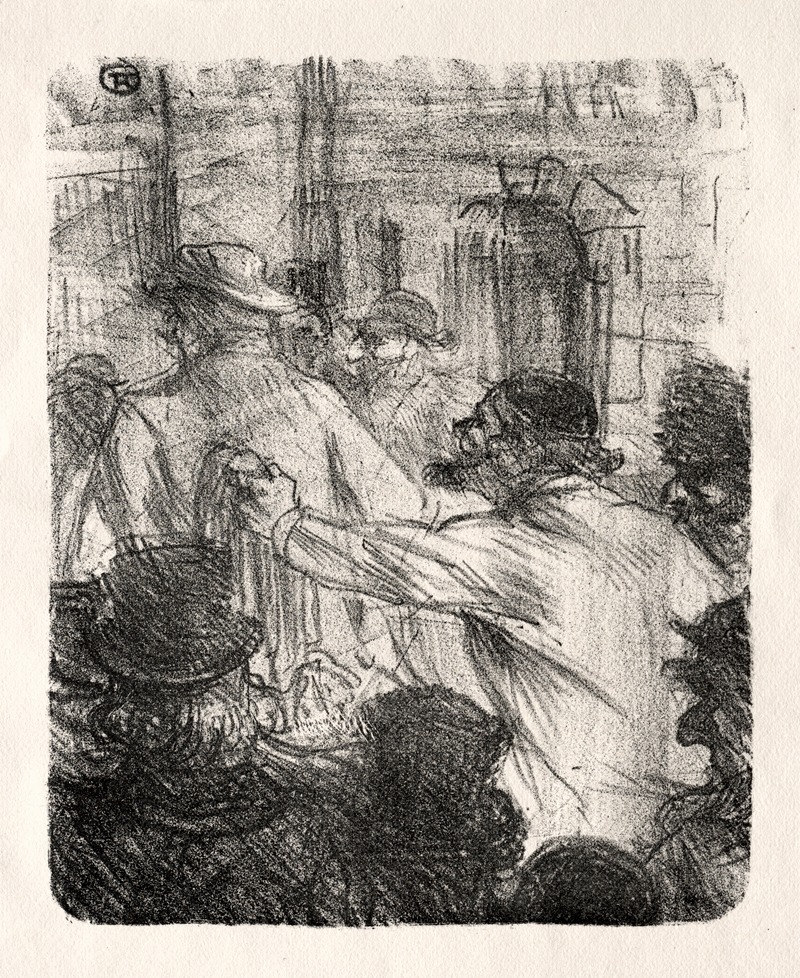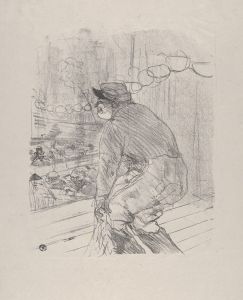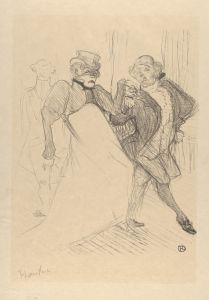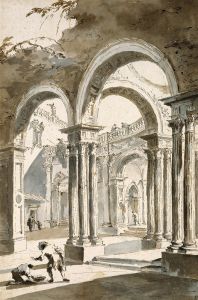
Au pied du Sinaï; La Halle aux Draps, Cracovie
A hand-painted replica of Henri de Toulouse-Lautrec’s masterpiece Au pied du Sinaï; La Halle aux Draps, Cracovie, meticulously crafted by professional artists to capture the true essence of the original. Each piece is created with museum-quality canvas and rare mineral pigments, carefully painted by experienced artists with delicate brushstrokes and rich, layered colors to perfectly recreate the texture of the original artwork. Unlike machine-printed reproductions, this hand-painted version brings the painting to life, infused with the artist’s emotions and skill in every stroke. Whether for personal collection or home decoration, it instantly elevates the artistic atmosphere of any space.
Henri de Toulouse-Lautrec, a prominent French painter, printmaker, and illustrator, is best known for his depictions of the vibrant and theatrical life of Paris in the late 19th century. However, the specific artwork titled "Au pied du Sinaï; La Halle aux Draps, Cracovie" is not widely documented in art historical records or major collections. Toulouse-Lautrec's oeuvre primarily focuses on scenes from the Montmartre district of Paris, capturing the essence of cabarets, dance halls, and the bohemian lifestyle of the time.
Toulouse-Lautrec was born on November 24, 1864, in Albi, France, into an aristocratic family. Despite suffering from congenital health problems that stunted his growth and led to physical disabilities, he pursued an education in art. He moved to Paris in 1882, where he studied under prominent artists and became deeply involved in the city's avant-garde art scene. His work is characterized by its innovative use of color, expressive line work, and keen observation of human behavior.
The artist's most famous works include posters for the Moulin Rouge and portraits of performers such as Jane Avril and Yvette Guilbert. Toulouse-Lautrec's style is often associated with Post-Impressionism, and he is credited with influencing the development of modern art through his unique approach to composition and subject matter.
While Toulouse-Lautrec traveled to various locations during his lifetime, including Spain and England, there is limited information about any significant connection to Kraków or the creation of a work specifically titled "Au pied du Sinaï; La Halle aux Draps, Cracovie." The Cloth Hall (Sukiennice) in Kraków is a historic building in the city's main square, known for its Renaissance architecture and role as a center of trade. However, there is no substantial evidence linking Toulouse-Lautrec to this location or suggesting that he produced a work featuring it.
Toulouse-Lautrec's legacy is preserved through his extensive body of work, which continues to be celebrated in museums and galleries worldwide. His ability to capture the spirit of his era with both humor and empathy has cemented his place as a pivotal figure in the history of art. Despite his relatively short life—he died at the age of 36 in 1901—his influence endures, and his works remain a testament to his extraordinary talent and vision.
In summary, while Henri de Toulouse-Lautrec is a well-documented and influential artist, there is no verifiable information available regarding a painting titled "Au pied du Sinaï; La Halle aux Draps, Cracovie." His known works and contributions to art history remain significant, but this specific title does not appear in recognized catalogs or collections of his art.


















